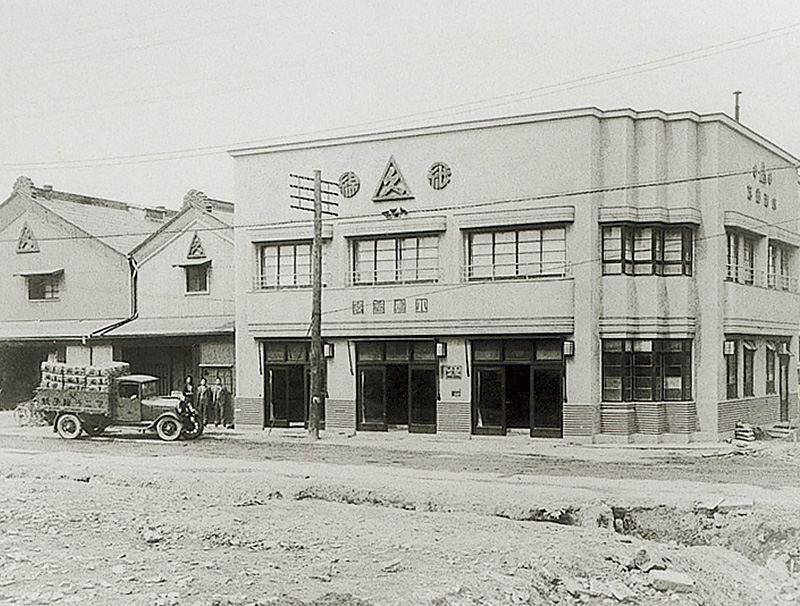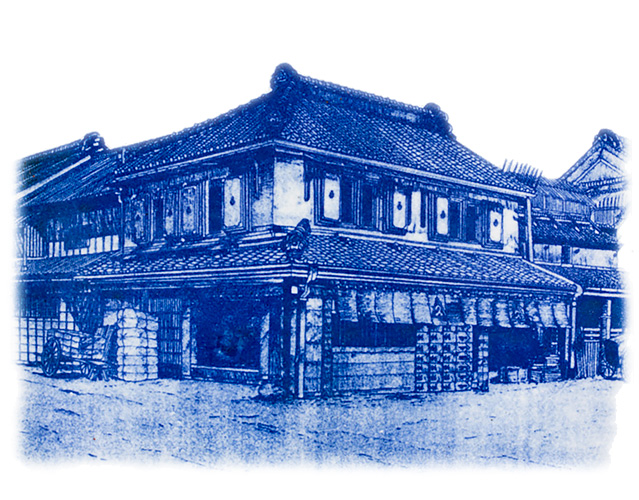The History of Ozu dates back to 1653, when Ozu Seizaemon-Nagahiro opened a store in Otenma-cho, Edo (today's Tokyo) at age 29. The trade name was Ozu-ya with the triangle logo with the Chinese character meaning long and lasting inside.
The name comes from his friend's strong advice, saying it brings good fortune and makes the shop successful. Then, Nagahiro bore his name of Ozu-ya Seizaemon or Ozu Seizaemon.
Ozu Washi History

Chronology
| Edo Period (1600-1867) |
1653 | Ozu Seizaemon-Nagahiro founded a wholesale paper store, Ozu Seizaemon-ten at Otenma-cho (present location) in the downtown area in Edo. |
|---|---|---|
| 1698 | He opened a cotton cloth shop in Otenma-cho. | |
| 1755 | The store was participated in the exchange operations in Edo for the Kishu clan, one of regional feudal governments. | |
| 1784 | Seizaemon-Nagayasu the seventh opened a shop named Ohashi-ya, dealing in tea and dried bonitoes. | |
| Meiji and Taisho Period (1868-1926) |
 Ozu Seizaemon-ten in Meiji Era
|
1880 | Ozu takes over a business from Tokyo Yoshi Ltd., and changes its name to Ozu Yoshi-ten capitalized at ¥100,000. |
| 1886 | A cotton-spinning company, Tokyo Boseki, capitalized at ¥500,000 was established, tying up with other stores for wholesale cotton cloth. | |
| 1886 | Ozu Bank capitalized at ¥100,000 was established in Matsusaka, Mie Pref. | |
| 1903 | A spinning mill producing fine yarns, Ozu Hosoito Boseki-sho was established by acquiring a factory owned by a company named Nihon Hosoito Boseki. | |
| 1920 | Ozu Hosoito Boseki-sho established Ozu Burin Kigyo Co., Ltd. absorbing Burin Yoko. | |
| 1923 | Great Kanto Earthquake | |
| Showa Period (1926-1989) |
1927 | Due to the 1927 Financial Crisis, Ozu Bank merged with Yokkaichi Bank (the present Mie Bank). |
| 1929 | Ozu&Co. was founded to incorporate business. Ozu&Co.
|
|
| 1939 | Aiming at the modernization of management, Ozu Shoji Co., Ltd. was founded at Nihombashi, Tokyo, (the location of today's headquarters). | |
| Heisei Period (1989- ) |
1994 | The Ozus' Histrical Documents were registered on Chuo-City-Registered Tangible Cultural Properties. |
| 1998 | The Ozu Historiy Museum was opened inside the Ozu Washi Hakubutuho (today’s Ozu Washi). | |
| 1999 | Items of daily business used at the Edo Ozu Shoten were registered on Chuo-City-Registered Tangible Folk Culture Properties. |



